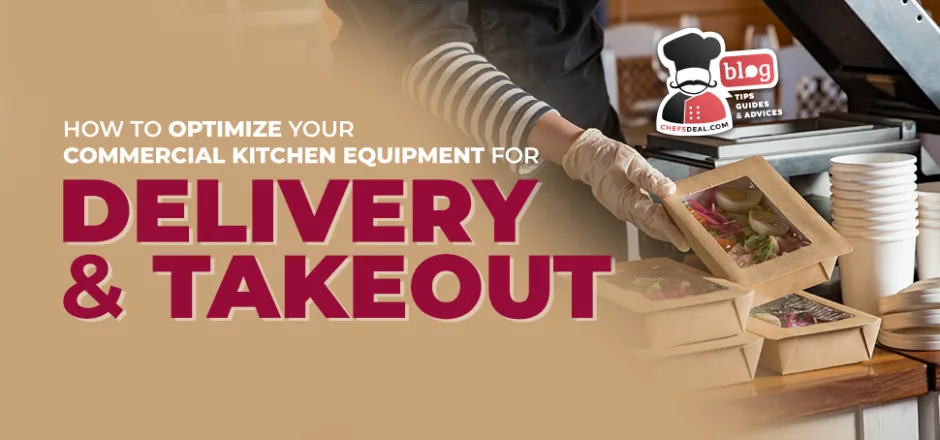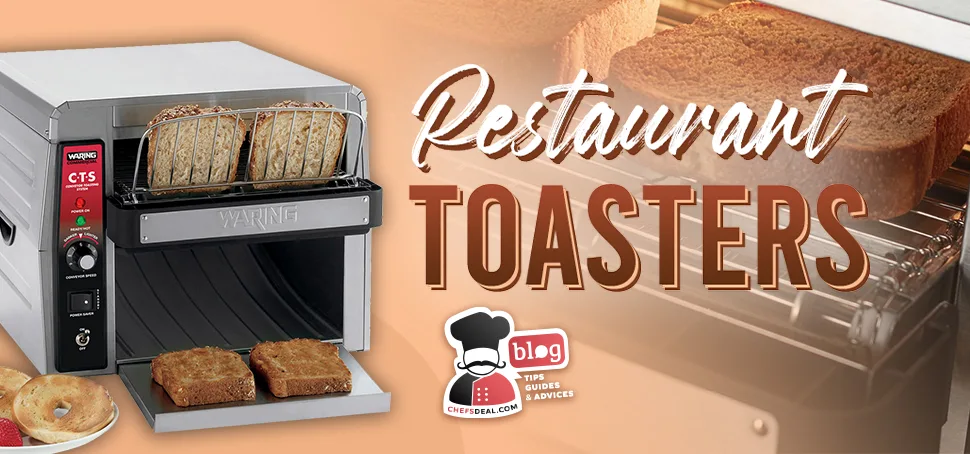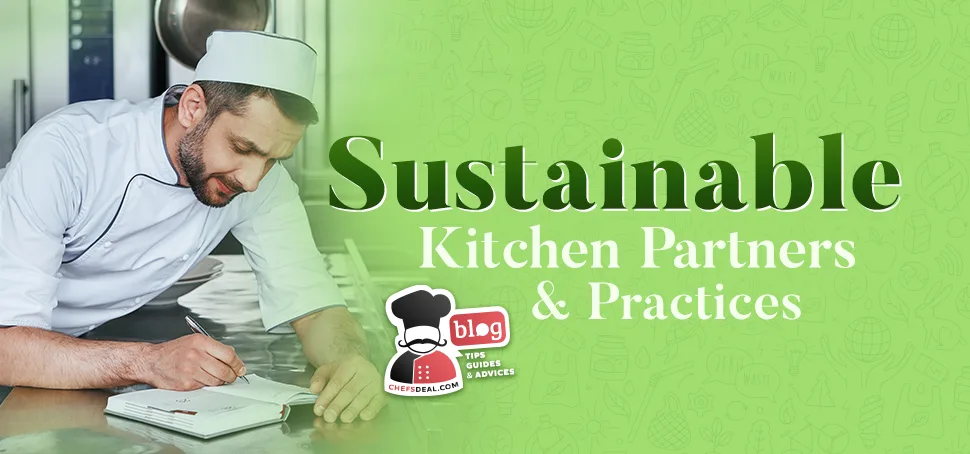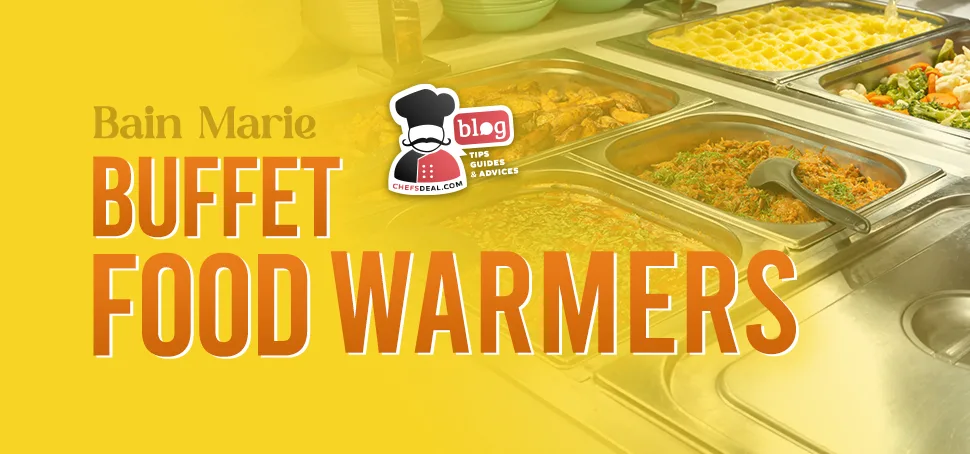Optimizing a commercial kitchen for delivery and takeout is a strategic imperative in today’s culinary landscape, where off-premises dining demands are soaring. It’s not just about efficient equipment placement; establishments must also refine workflows, invest in sustainable packaging, utilize technology for order management, and train staff to ensure that takeout orders meet dine-in standards. Embracing these changes boosts the customer experience and creates new revenue avenues, reinforcing a restaurant’s market stance.
According to a report from the National Restaurant Association, in the early stages of the COVID-19 pandemic, around 70% of consumers preferred takeout or delivery over dine-in, a figure that highlights the surge in demand for off-premises dining.
Therefore, “How to optimize a commercial kitchen for delivery and takeout?” isn’t merely a fleeting consideration. It’s a vital strategy that enables businesses to cater seamlessly to this growing demand, upholding food quality, presentation, and overall satisfaction. In this guide, we’ll explore the key strategies and tips to transform your kitchen for this evolving trend, guaranteeing that every dish, whether enjoyed in-house or off-premises, epitomizes excellence.
8 Tips to Optimize Your Commercial Kitchen Equipment for Delivery and Takeout?
When opening your business to delivery and takeout, you should adjust your production, stocks, equipment, and layout accordingly. While the defining factor for capacity and layout only used to be the space you had, with takeout and delivery, you should consider the breadth of your service area and prepare to meet the potential demand in the smoothest, most profitable way possible. These key 8 tips to optimize your culinary business’ delivery and takeout service:
- Adjust Your Menu
- Reorganize your Layout and Workflow
- Invest in a High-capacity Microwave
- Invest in Heat Retention Equipment
- Ensure Ventilation
- Integrate Technological Solutions
- Strategize and Prepare in Advance
- Designate Special Staff for Delivery Preparation

1. Adjust Your Menu
It would help if you considered simplifying your menu or creating separate menus for dine-in and takeouts. For the takeout/delivery menu, include items that will travel well and be quick to prepare. Plus, separating the menus for takeout and dine-in can streamline operations and prevent delays for in-house diners. Restaurant menu design is highly related to the commercial kitchen equipment you have.
2. Strategize and Prepare in Advance
Optimizing commercial kitchen equipment for delivery and takeout necessitates proactive strategizing and preparation. After you analyze and adjust your menu, identify the dishes frequently ordered for takeout or delivery.
Once identified, ensure that your kitchen equipment is specifically tailored to handle the bulk production of these items. For instance, if pizzas or grilled sandwiches are popular takeout items, invest in commercial-grade ovens or grills that simultaneously handle multiple orders.
Additionally, consider prepping ingredients in batches using food processors or mixers to expedite the cooking process during peak hours. Cold storage solutions, like commercial refrigerators and freezers, can be organized to store pre-portioned ingredients, ensuring that they remain fresh and are easily accessible. By foreseeing demands and adjusting your equipment strategy accordingly, you can effectively reduce cooking times, streamline processes, and ensure consistent quality for every delivery and takeout order.
You should devise an action plan for each meal on the takeout menu. Plan the most efficient preparation process and practice in advance to ensure your staff knows what to do. Try to prepare as many ingredients as possible in advance. For example, if you need certain ingredients to be chopped for some meals, you can chop them in advance and store them for later use.
3. Integrate Technological Solutions
In the age of digitalization, optimizing a commercial kitchen for delivery and takeout requires embracing advanced technological solutions. Implementing an efficient Point of Sale (POS) system can streamline order intake, reduce human errors, and speed up order processing.
Additionally, integrating with popular delivery platforms ensures that orders are directly sent to the kitchen, minimizing communication lapses. Advanced kitchen display systems (KDS) can further prioritize and organize orders, ensuring timely preparation and dispatch. As delivery windows tighten and customer expectations rise, these technologies’ real-time tracking and data analytics become invaluable.
They enhance kitchen efficiency and offer insights into peak ordering times, popular dishes, and potential bottlenecks. In essence, leveraging technology is no longer a luxury but a necessity for restaurants aiming to excel in delivery and takeout services.
4. Reorganize Your Layout and Workflow
Reorganize your kitchen equipment layout to create a specific space for assembling delivery and takeout orders. By separating the prep area for dine-in meals and takeouts, you can minimize cross-traffic between staff, and by designating a separate area for order pick-ups and dine-in meal services, you can prevent passerby customers and delivery staff from bothering the in-house customers.
5. Invest in a High-capacity Microwave
Pre-cooked meals are the backbone of fast-delivery meal services. Even if your product is fresh, the customer will want it with steam on top, and the fastest way to reheat meals is with a commercial microwave.
6. Invest in Energy Star and Heat Retention Equipment
You should invest in heat retention equipment to keep the food warm before packaging and delivery. Heated holding cabinets and heat lamps over the prep area can keep the food warm till pick-up.
The latest commercial kitchen equipment, like combi-ovens, can save up to 40% in energy compared to traditional counterparts, as per ENERGY STAR ratings.
7. Ensure Ventilation
Since most of your job will be keeping large quantities of food hot till order, choosing the right ventilation system is essential, and you should ensure it can handle the heat. Otherwise, the heat generated from the delivery meal section of your kitchen can overwhelm the space and make it hard to work. Excessive heat and odor should be removed from the air immediately to prevent health hazards and spoilage of other ingredients.
8. Designate Special Staff for Delivery Preparation
The process for dine-in and delivery meal cooking will be tremendously different. The latter requires intense focus and quickness. You should separate your staff into two teams and ensure that one team is properly focused on the fast-paced preparation and delivery of the takeout meals.
A study by US Foods in 2019 found that about 28% of delivery drivers admitted to tasting the food they were delivering. This not only emphasizes the importance of tamper-proof packaging but also the need for restaurants to invest in reliable delivery partnerships.
9 Ways of Optimizing Packaging for Deliveries and Takeouts
Packaging is the most crucial consideration when it comes to deliveries and takeouts. You should consider the journey the food will take till it reaches the customer and how it’ll look once on the table. Follow these tips to optimize the results:
1 – Use Insulated Delivery Bags: These specialized bags keep food at optimal temperatures during transit, ensuring your customers receive hot and fresh meals.
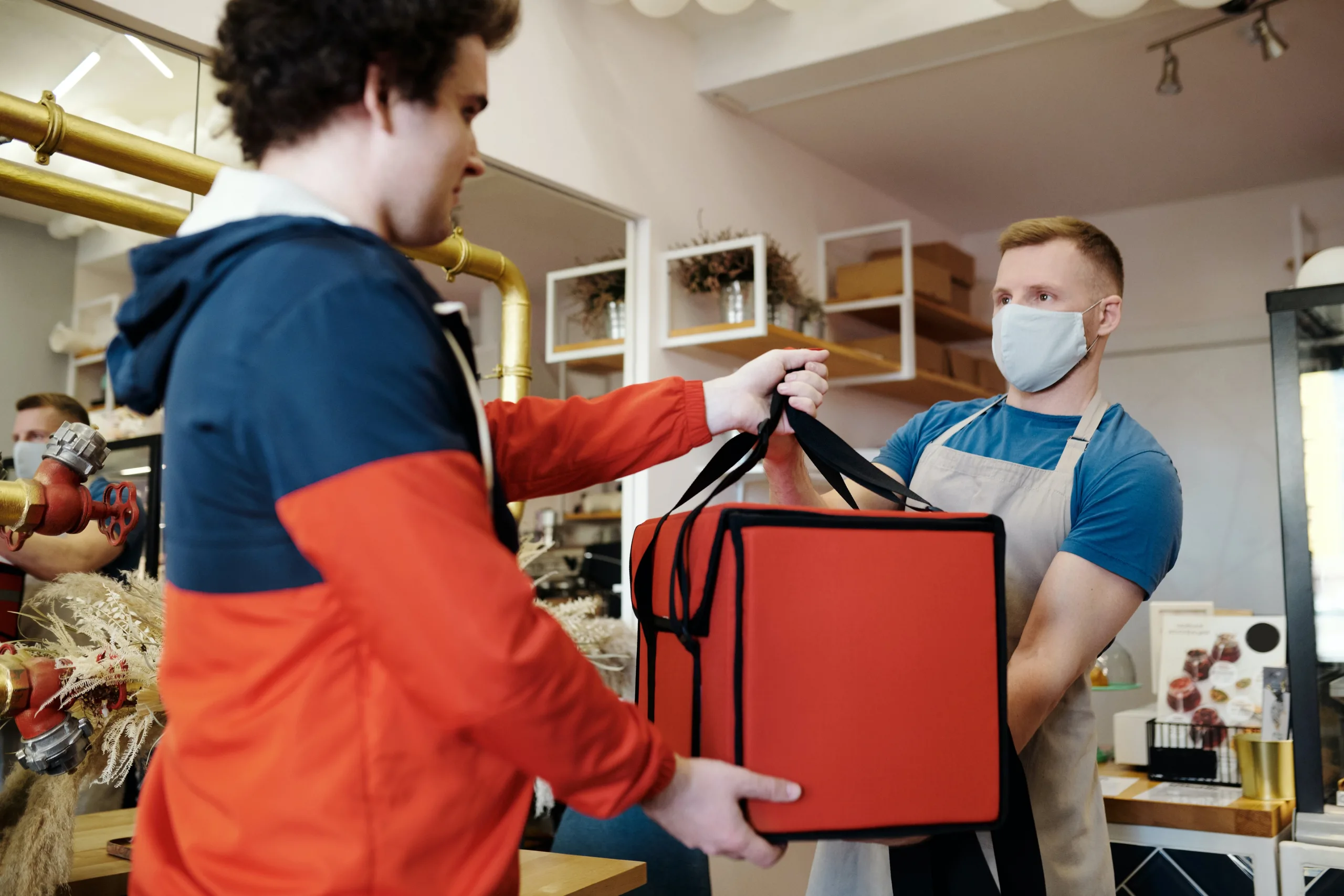
2 – Make Sure Your Packaging Is Tamper-Evident: Secure packaging solutions protect the food’s integrity and assure customers of its safety and authenticity upon delivery.
3 – Use Customizable Food Containers: Versatile containers designed for various cuisines and portion sizes contribute to efficient packaging, catering to the diverse menu offerings of your establishment.
4 – Use Delivery Tracking Systems: Incorporating GPS-enabled tracking systems allows you to monitor the delivery routes in real time, ensuring accurate and timely deliveries while allowing your customers to track their orders.
5 – Consider Automated Packaging Machinery: Advanced machinery can be used to automate the packaging process; this increases efficiency and reduces the likelihood of errors, especially during peak hours.
6 – Consider Environmentally Friendly Packaging: Eco-conscious establishments should opt for sustainable and biodegradable packaging materials; this would align them with modern environmental standards and demonstrate a commitment to reducing the ecological footprint.
A survey by QSR magazine reported that 57% of customers stated they were more likely to purchase food from restaurants that provided eco-friendly packaging, showcasing the growing demand for sustainable takeout solutions.
7 – Use Stackable and Space-Efficient Containers: Efficient packaging includes stackable containers, optimizing storage space in your kitchen and during transportation, which is crucial for large-scale operations.
9 – Use Durable Insulated Containers for Beverages: If you offer beverages, investing in durable, insulated containers is crucial to preserve the temperature and quality of your drinks during transit.
What are the Benefits of Delivery and Takeout for Restaurants?
Takeout and delivery services have emerged as indispensable lifelines for restaurants, offering numerous benefits in today’s culinary landscape.
- Enhanced Customer Convenience: Takeout and delivery services provide an astonishing amount of convenience for customers, allowing them to enjoy their favorite meals in the comfort of their homes.
- Revenue Boost and Market Expansion: These services present a crucial opportunity for restaurants to increase their revenue and broaden their reach in the market, acting as a crucial support for continuous growth.
- Adaptability to Changing Preferences: In an era defined by a fast-paced lifestyle, the flexibility of takeout and delivery aligns with ever-evolving consumer preferences; this ensures that the restaurants stay in tune with the times.
- Thriving Amidst Shifting Dining Trends: Embracing these services goes beyond ensuring a steady flow of orders; It puts restaurants in a place to adjust and thrive in the face of constantly shifting dining preferences.
- Innovative Solutions and Customer Satisfaction: Integrating takeout and delivery into a restaurant’s strategy allows for implementing new, innovative solutions, from digital transactions to personalized customer experiences; these innovations ultimately enhance overall satisfaction.
Conclusion
In today’s rapidly evolving food industry, optimizing commercial kitchen equipment for delivery and takeout is no longer optional—it’s a necessity. As off-premises dining becomes a staple of the modern dining experience, restaurants must adapt and evolve their kitchen setups and operations. By investing in the right equipment, streamlining processes, and embracing technology, establishments can rise to meet these challenges, ensuring their brand’s longevity and consistent customer satisfaction.
As we venture further into this delivery and takeout-centric era, the restaurants that prioritize this optimization will be the ones to thrive and lead the way. You should follow these tips to optimize your commercial kitchen equipment for delivery and takeout and regularly assess and fine-tune your processes to adapt to changing customer preferences.

